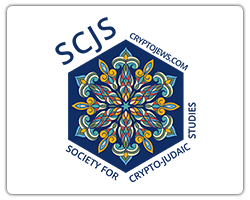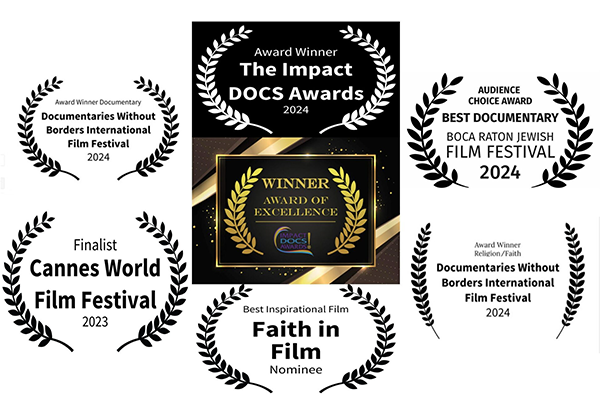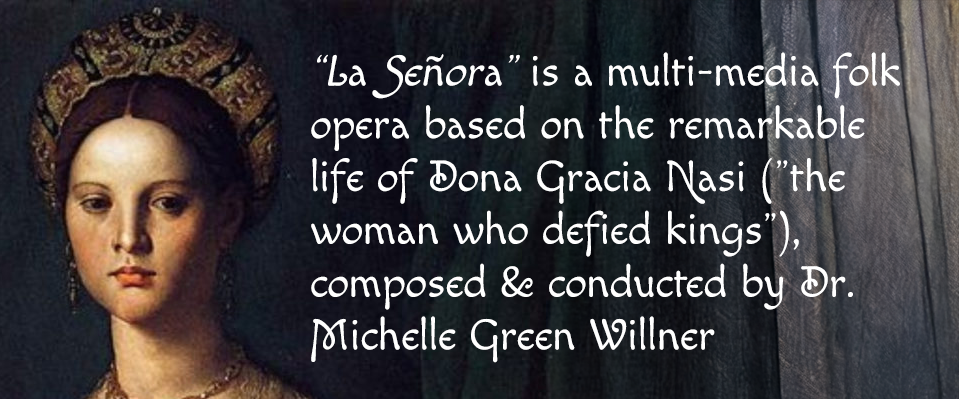As delivered at the December 1996 Conference of the SCJS in Albuquerque
Translated from Spanish
I am grateful to God and to you for allowing me to share with you my experiences as I searched for the origins of my family
I will begin by mentioning that this quest was begun in my early youth and has been transforming itself gradually into the modest project in which I am now engaged
Where does this zeal for searching come from? As far as I can remember the family’s practices and teachings were always directed towards achieving family unity and assuring the survival of the familial group We were taught the need for respect toward the society in which we grew up even if we were not full active participants in religious and political matters That is to say our participation limited itself to the economic sphere and to those areas of social concern that guaranteed family survival and above all those social and religious practices inherited from our ancestors and not practiced by the majority
For example we accepted Catholicism as the dominant religion learning its basic concepts and followed the church practices of the majority such as wedding ceremonies and funeral rates At the familial level however other traditions inherited from our ancestors were also taken into consideration These differed considerably from the common traditions
The main conversation themes and those moments of joy or sadness within the family were invariably accompanied by comments about family unity honor love fear of God and remembrance of our ancestors practices that were not common in the rest of the society in which we lived
This family background perceived and evaluated from the perspective of my youth and significantly reinforced by the discreet commentaries of some of the elderly members of the family regarding our littleknown and almost extinct Jewish past made me ponder the idea of studying and researching more about the subject It was thus that I retrieved a good portion of the data that is leading me to the Sephardic origins of my family
The retrieval of my families’s past has made me better understand the present It has given us a more complex idea of our identity a closer identity freed from myths legends and exclusions which were deliberate It has also allowed me to appreciate the true role played by my ancestors within the Crypto Judaic practices that were present during the period of colonization of the region I have been able to understand the way practices and habits were preserved despite the process of assimilation which became more evident with time
During the first stages of my research I felt like someone who is trying to piece together a four hundred years old puzzle To someone like me not dedicated to historical research as a professional endeavor this search constitutes something especial It might not seem to go along with the logic of our times since to enter the terrain of genealogy and historical restoration is to bring back the past through memory With each piece we reenact the past modifying the present and the future
The first sources of information to which I turned were logically those furnished by my family both oral and/or written documents This took me to the beginning of the XVII century These data carefully handed down and well preserved possess an acceptable degree of reliability In the first stage of my research I became aware of the lack of available regional religious archives from the second half of the XVI century and the first half of the XVII century a most controversial period when Crypto Judaism was strongly present Endogamous practices have also been confirmed between second and third degree related kin The route followed by our ancestors from their departure in Andalucia and other points of the Raya of Portugal to their arrival in the Northeastern of Mexico has also been documented Another data which has been confirmed has been the nomadic type of life practiced by the family until about the middle of the XVIII century period when Don Jose de Escandon lead by Blas Maria de la Garza Facon came to colonize the Northern and Northeast region of the present State of Tamaulipas Later movements displaced them to points along the banks of the Rio Bravo as they followed its course to the Gulf of Mexico
I was able to follow the family genealogy until the middle of the XVI century but this information needs to be examined further
I was able to further my research by comparing the data obtained from my family and that obtained from some of the recorded trials of the Inquisition and from research already done on Crypto Judaism and converted Jews in New Spain With this information I was able to confirm the links of my family to the regional Sephardic culture of the XVI and XVII centuries These were not only of a religious and ideological nature but also established kinship relations originating from the common geography and economic networks maintained by the majority of those SpanishPortuguese families that colonized the region
Other findings during this phase of my research which should open new directions for further work are:
a) The fact that the majority of surnames temporarily rejected by those living in the XVI and XVII centuries coincide with the surnames of some Crypto Jews tried by the Inquisition (Alonso Falcón Treviño Baez etc)
b) That families identified as being converted Jew’s and my ancestors came from the same region of the Iberian peninsula
c) That in several of the trails of the Inquisition the name of persons linked ro my ancestry appear The linkages established go beyond geographical origin and include those of kinship
d) That the route followed by my ancestors in New Spain is similar to that followed by converts mentioned in some of the documented trials of the Inquisition
e) That the family history known between the XVIII and XIX century is one in which the frequent existence of disputes and differences between family members and representatives of the clergy is known differences apparently motivated in the majority of cases by economic reasons (mining and cattle ranching)
f) That in the studies of the trials of the Inquisition a high number of possible homonyms are found which makes us believe given the coincidences and circumstances of the times that some of those individuals were related to my family or were very closely linked to it
g) That there Is a strong similarity between the Sephardic culture revealed by the trials of the Inquisition and practices still followed by our families regarding meat consumption prohibitions about food mixing rules of personal cleanliness wedding rituals funeral rites house cleaning the biblical passages often read the insistence on family traditions and the care of guarding genealogical information
h) That it has been a continuous family tradition to live at the border a visible strategic practice of Crypto Judaic families since about the XVI and XVII centuries
i) Trying to establish how Crypto Judaic and Christian families that colonized Northeastern Mexico at the beginning of the XVII century benefitted from the Papal Bull of August 23 1604 by which all ’marranos’ that confessed their mistakes (Judaic practices) within the lapse of two years would be pardoned It is known that the period between 1604 and 1606 was economically crucial in the colonization of Monterrey
j) To establish the relationship between the name of “San Gregorio” used for the mines where Luis de Carvajal “The Youngest” is said to have kept the Law of Moses and where Manuel de Herrera relative of Castano Sosa practiced Judaic rituals with the “San Gregorio” ranch located not far from Monterrey and where some Jews escaping European nazism between 1939 and 1940 established themselves as farmers
k) Trying to establish the relationship between Juan Alonso Lobo Guerrero a rich miner close to Governor Zavala who entered the New Kingdom of Leon and Dr Don Bartolome Lobo Guerrero member of the Santo Oficio (15801592) and incriminator of Governor Don Luis de Carvajal y de la Cueva
1) To verify if Tomas Treviño de Sobremonte met Martin de Zavala at the University of Salamanca (Spain)
m) To define if Duarte Leon The Elder preceded or headed the Fernandez de Castro family
n) To confirm If it was incidental that at Toledo the “Spanish Jerusalem” the surrender of Luis de Carvajal y de la Cueva was signed on June 14 1579
ñ) To be able to verify the Sephardic origin of Fray Servando Teresa de Mier due to his closeness to the colonizing families of the New Kingdom of Leon
o) To find out the relationship the descendants of one of the founders of Zacatecas Baltazar de Temino had with the family composed by the brothers Jose Sebastiana and Juana de Treviño who were originally from Zacatecas and were part of the initial colonization of Monterrey when Diego de Montemayor founded it once more (15961604)
I must mention another fruitful experience I recently had when I was able to establish contacts with institutions and historians that have information about this subject and who also foster research about this area I have been able to broaden my vision and the area of my project with their contribution that for several years was only personal and family oriented
The following is a brief review of what I have achieved during this research:
1 I have been able to confirm that at the regional level there is a strong consciousness of an unknown and barely studied and researched ethnic and religious past
2 1 have found abundant genealogical information
3) I have been able to trace my genealogical tree to the end of the XVI century
4) I have identified study and research groups on the subject of my research on both sides of the border
5) I have experienced a strengthening of my identity
6) I have perceived that religious prejudice prevails based on the stigma generated by the Theocide attributed to the Jewish people
7) I have confirmed that several families with possible Jewish origins continue to consider this subject hard to deal with bringing to bear topics such as Theocide the Inquisition and the Holocaust
8) I have perceived that due to the resurgence of extreme nationalisms ethnocentrism and intolerance towards minorities this type of research could be discouraged and instead be conducted only as research for individual benefit without the possibility of being shared or disseminated
9) 1 have been able to abandon the feeling that we belong to a people with an “Official History” and without a “Real History”
10) I have been able to perceive the risk of going from “voluntary segregation” to the “real segregation” of future generations
11) I have been able to understand that the conceputalization of life as “black and white” has been throughout the centuries one of the main causes that generated ethnic and religious intolerance and that converted Jewish people (“New Christians”) of the XVI and XVII centuries in the Northeast of Mexico and a majority of its descendants up to date are a clear evidence that the fear of becoming targets of that intolerance have not been eradicated despite the three hundred years of assimilation that passed since the last grand autosdafe
Before closing I would like to mention the data found that had the greatest impact on me during the research process One has been the confirmation that in different periods beginning in the XVI century an attitude of disqualifying any evidence which might support the evidence of the Sephardic origins of the colonizers of the region has been constant that is all evidence is disqualified before being examined
The other was obtained from a newspaper article printed during the height of national socialism in Germany where among other things it said: “Due to persecutions unleashed by Hitler against the Jews in Germany it is interesting to uncover some information relative to the Jewish communities established in the place now known as Monterrey during the penultimate decade of the XVI century this was the most numerous and the best organized in New Spain”
If as we know today the world during those years prepared itself for one of the worst times of religious as well as ethnic intolerance I am still asking myself what would have happened if the NationalSocialist winds had arrived on our continent? What were the real intentions of newspaper articles written for a national audience such as this one?
Other conclusions:
1 Northeastern Mexico has been mostly colonized by Portuguese “New Christians” of Sephardic origin
2 Colonization originated simultaneously from three main points
From La Raya de Portugal
From the area of the Panuco
From Zacatecas and Saltillo
3 The more traveled routes in order to reach Northeastern Mexico were:
a) Route One: Raya de PortugalSevillaTampicoMazapilSaltilloCerralvoMonterreyMonclovaCerralvoCamargoMatamoros
b) Route Two: Raya de PortugalSevillaVeracruzMexicoZacatecasCuencameSaltilloMonterreyCerralvoCamargoMatamoros
4) The persecutions of the Inquisition were in many cases of an economic rather than religious nature
5) There is a shortage of sources due to situations of religious intolerance during the XVI andXVII centuries
6) There was no total assimilation to Catholicism in the case of the majority of the “New Christians” that colonized Northeastern Mexico
7) Even today among the majority of the descendants of the converted colonizers there has been no complete displacement of some of the Crypto Judaic practices prevailing during the XVI and XVII centuries
8) Theocide continues to be a stigma that limits the free circulation of research
9) Religious intolerance has not disappeared and the recurring political and economic crises we are living provoke its resurgence discouraging this kind of research
10) Genealogies constitute an alternative source of data for this kind of research
11) There Is a strong current on the border of Tamaulipas Nuevo Leon and Coahuila with Texas that is promoting regional historic research with the intention of rewriting existing official versions
12) That this kind of research is longterm due to the limited economic resources available for its pursuit
I would like to thank persons and organizations that supported me Without their assistance I could not have completed this research They facilitated information which bolstered my desire to continue with the project I would like to thank Mr Stanley M Hordes Mrs Schulamith Halevy Mrs Alicia Gojrnan de Backal Mrs Ana Portnoy de Berner the Israeli Embassy of Mexic the Cultural Institute MexicoIsrael the LatinAmerican Association on Judaic Studies Editorial Kesher and I would also like to thank my ancestors that with their faith worth and perseverance were able to survive physically and spiritually during times of heightened ethnic and religious intolerance





